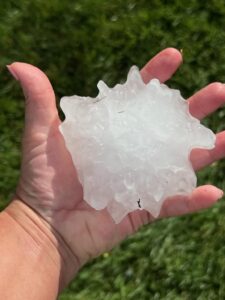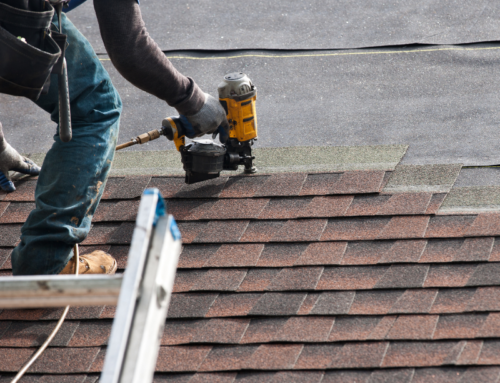When the skies darken and thunder rumbles, the threat of hailstorms looms over the plains of Nebraska and Iowa. These states are no strangers to severe weather, and one of the most common culprits of property damage during these storms is hail. Hailstones can vary greatly in size, from tiny pebbles to golf-ball-sized projectiles. In this blog post, we’ll delve into the effects of different sizes of hail on roofs in Nebraska and Iowa, exploring the potential damage and ways to protect your home.
The Hail Challenge
Hailstones form when strong updrafts in thunderstorms carry raindrops into freezing upper-level air, causing them to freeze into ice balls before falling to the ground. The size of these hailstones can vary significantly, and this variation has a direct impact on the damage they can cause to residential roofs.
- Tiny Terrors: Pea-sized Hail Hailstones the size of peas might seem harmless, but they can still pose a threat to your roof. These small hailstones can accumulate on your roof, creating a layer of ice that can lead to leaks and water damage over time. Additionally, the impact of these hailstones can cause granule loss from asphalt shingles, reducing the shingles’ lifespan and overall effectiveness.
- Moderate Mayhem: Marble-sized Hail Hailstones the size of marbles pack a more substantial punch. The impact from these hailstones can cause cracks in asphalt shingles, leading to water infiltration and potential interior damage. Metal roofs are not immune either, as they can dent and become vulnerable to rust if hit repeatedly.
- Golf-ball-sized Giants Golf-ball-sized hailstones are notorious for causing significant damage. These sizable ice balls can break through shingles, creating holes that allow water to seep into your home. They can also crack or break clay or concrete tiles, necessitating immediate repairs. Roof vents, chimneys, and skylights are particularly vulnerable during such storms, as the impact from large hailstones can compromise their integrity.
- Tennis-ball-sized Terrors Hailstones the size of tennis balls are among the most destructive. The forceful impact of these hailstones can shatter shingles, fracture tiles, and even damage the underlying structure of the roof. Repairs or replacements become inevitable, and the interior of your home may be exposed to the elements if action isn’t taken promptly.
Protecting Your Roof
While you can’t prevent hailstorms, there are steps you can take to minimize the damage caused by hail:
- Regular Roof Inspections: Schedule routine roof inspections to catch and address minor issues before they worsen. A professional team like Dynasty Roofing & Restoration can get out to your home and get you a fair assessment. Since the recent August hail storms, we have seen hail damage varying from .5″ diameter to softball hail damage. Whether you are in Fremont, Valley, Elkhorn or West Omaha – if you haven’t had your roof inspected after the recent storms, now is the time to double check.
- Impact-Resistant Roofing Materials: Consider upgrading to impact-resistant roofing materials, such as Class 4 asphalt shingles, metal roofing, or synthetic roofing materials. These options are designed to withstand hail impact better than traditional materials. See the difference in Class 4 vs. Class 4 materials here.
- Trim Overhanging Branches: During a hailstorm, overhanging tree branches can worsen the impact on your roof. Trim any branches that could potentially break and fall onto your roof.
- Hail Guards and Protective Screens: Install hail guards or protective screens over vulnerable areas like skylights, vents, and other roof penetrations to reduce the risk of hail damage.
When it comes to hailstorms, size matters – and the effects of hailstone size on roofs in Nebraska and Iowa can be substantial. From minor leaks to major structural damage, the impact of hailstones can range from manageable to catastrophic. To safeguard your home and your investment, it’s important to stay informed, take preventative measures, and have a plan in place for addressing hail-related damage when it occurs.
Remember, if your roof does sustain damage during a hailstorm, consult with our team by scheduling a free estimate here, or by giving us a call. By being proactive and prepared, you can minimize the impact of hailstorms on your home and ensure your family’s safety and comfort.





